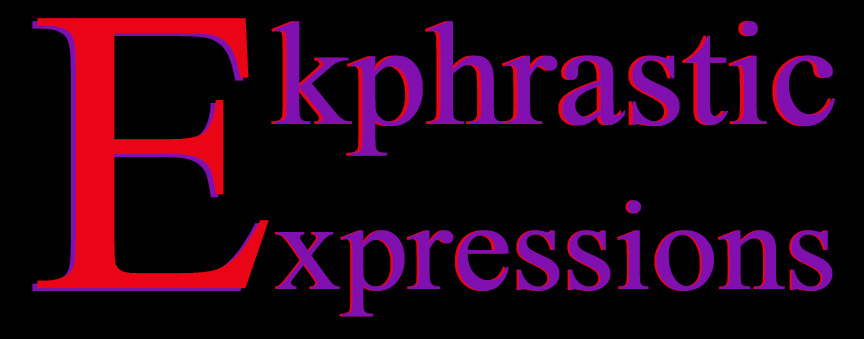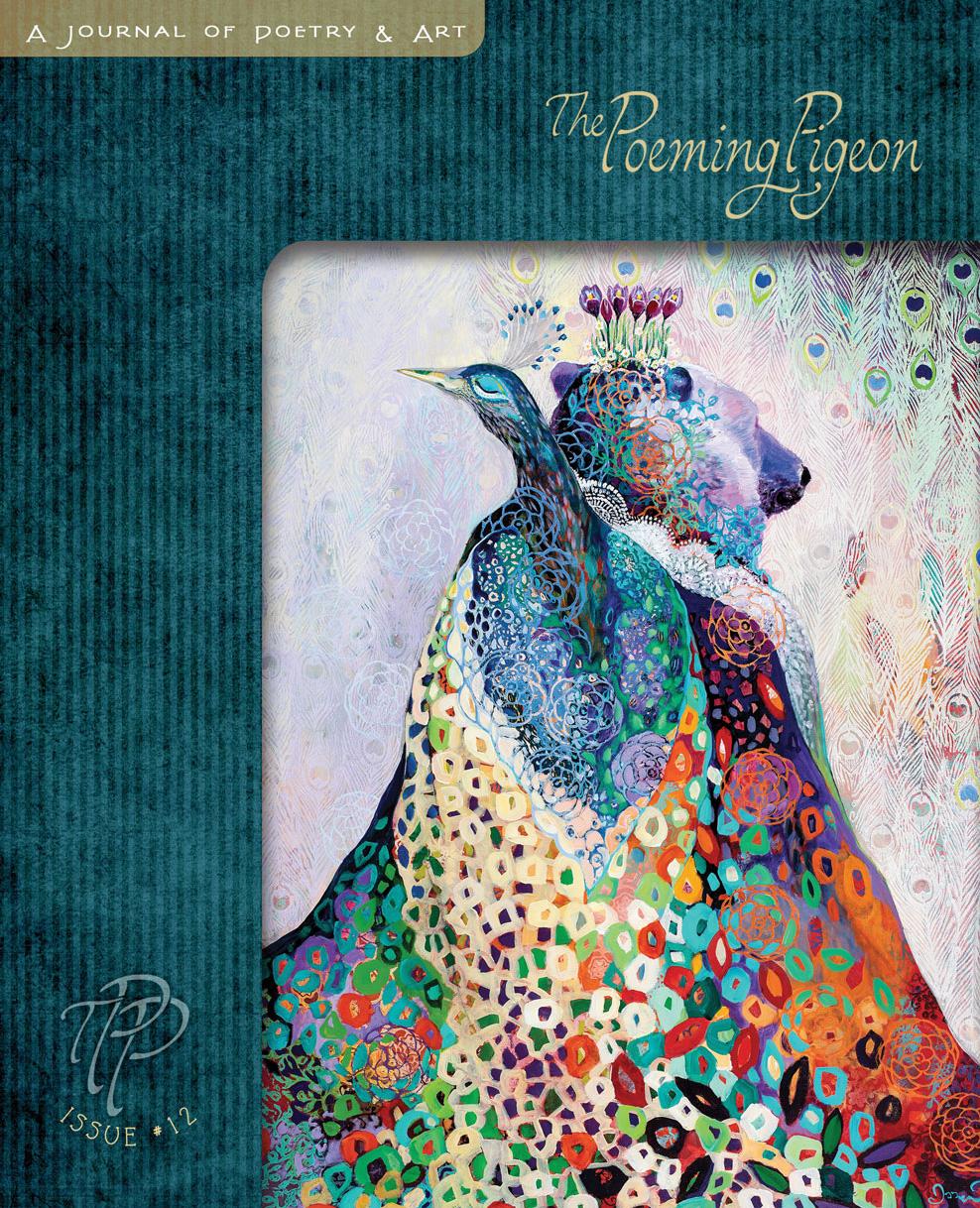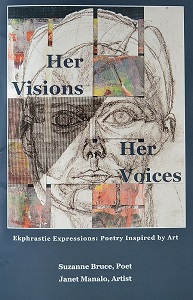
| Home | Poetry & Art | Events |
"Poetry and Art together, performing a Duet"
|
||||||||||
Interlitq’s Californian Poets Interview Series: Suzanne Bruce, Fairfield Poet Laureate, interviewed by David GaryanNovember 4th, 2023Suzanne Bruce’s poems appear in Interlitq's California Poets FeatureLink to InterlitqDG: You’re the current poet laureate of Fairfield, CA, a position you assumed on July 1st, 2022. Can you tell our readers what the last year and a half has been like for you?SB: First, it was a true honor to be appointed by our city council with mayoral approval. This past year and a half has been extremely busy, but full of excitement and elation! When appointed to the position, my main goal was to give community voices diverse opportunities to be heard through creative writing. On the logistical side of achieving this, opening communication with organizations, and coordinating venues within our community took time, but I was so appreciative of the welcome I received to set up various collaborations. The real joy is when people come and feel comfortable sharing their poems! The support I have received from the city, our libraries and other establishments has been much appreciated.DG: A big passion of yours is ekphrastic work, and you’ve worked extensively in this genre. How did you become fascinated with art and when did you decide that poetry would be the best way to describe it?SB: I have always loved eclectic styles of art. My husband was in the military and during our many reassignments, we always purchased an art piece that would remind us of the place where we lived at that time. We feel these pieces each tell a story of that part of our lives. I became more serious about my interest in writing poetry when he retired. Then the idea of putting art and poetry together intrigued me. In 2005, I, together with an artist friend I met in yoga class, attended an ekphrastic workshop to see how we could work together. It was an automatic and natural match. We began working closely together sharing the various stages of her artistic creations and my poetry. It was a catalyst for me to see “beyond” the art and express my feelings of it through words. She and I have continued to work together all these years. We have two published collections of many of those works: “Voices Beyond the Canvas” (2007) and “Her Visions Her Voices” (2015)I have also written some ekphrastic poems with other artists within our community and surrounding cities. And I have started an ongoing ekphrastic collaboration with our local art association so that experienced as well as aspiring poets can write poems to art for each of the scheduled exhibits. Participants read their work inspired by the art at the exhibit’s reception. It is so thrilling to see others excited about ekphrasis!DG: Apart from poetry and art, you’ve also taught for many years. How has this work influenced what you do in your creative life?SB: Being a teacher is a profession that is more than merely explaining subject matter. It is about inspiring and motivating students to become aware of their own potential and apply that to all aspects of their lives. Yet as a teacher, I learned so much from my students as well. Watching their uninhibited selves through language, movement and artistic expression was enlightening. I ask myself, why do we as adults not keep that honesty and spontaneity as we age? What can we do to keep that spark, that inner voice, unfettered? Writing poetry is often that link for me—letting my real-self speak rather than the one I think others want to hear.DG: To promote the work of others, you’re also doing a monthly poetry column to help aspiring writers gain a platform. How is the column structured and what type of work have you received so far?SB: When I contacted our local newspaper about this idea, I wanted to feature student poetry. I entitled it “The Poetry Connection.” I think it is so important that we let our youth know their voices can be heard. I reached out to local schoolteachers to see if they had students interested in sharing. I have received responses from various high schools, both on relevant themes, such as Black History Month, as well as non-themed writing. I have received work from Community College students studying in creative writing programs. Fifth graders who wrote about various colors and then decorated their poems were also showcased, as well as the winners from our library teen poetry writing contest. This past summer I attended a youth art camp to discuss how they can combine art and words. Those attendees wrote haiku to their art projects. People have come to my open mics and told me how much they appreciate seeing youth poetry represented and how it actually encouraged them to write.All the poems that are submitted to me for newspaper publication consideration are then hung in our locally owned downtown coffee shop. I change the poems out once a month to give all contributors an equal opportunity to have their pieces seen and read.DG: Many of your poems deal with identity and how that identity either blends or resists any given community in which its situated. This work tends to have a different feel compared to your ekphrastic pieces. Do you analyze any given setting, then write about it, or is this work more internal?SB: It is a little of both. I am an observer and try to take in all views. I am also one who internalizes what I am seeing. When I feel impassioned about a situation, I am compelled to write—a need to creatively express with wonder and curiosity. Without trying to place words in poetic form, I simply write down what I am experiencing. Sometimes it is just a need to put those emotions onto paper. Later I go back and re-visit my thoughts. That is when the process of writing a poem begins.But I also want the readers of my work to take their own journey with each poem. How I felt or shared sentiments does not mean that this is how the reader must take them.DG: It’s been known that you prefer, first, to write in longhand. Can you talk a bit more about your drafting and editing process? Is it fairly consistent, or does each poem require its own steps?SB: Yes, I start with pen and paper because that is the way I feel writing poems which come from my heart down my arm and through my hand. Once I have the core of the poem completed, then I will go to the computer and type it, playing with various line lengths/breaks/form. Each poem is unique. Some come right away, and I may only do one or two revisions. Others I leave alone and let them “rest,” then I come back later and see how I feel about them. Some poems get as many as ten or more tweaks and rewrites. Most of the time I do not know how I want the poem to end until I am there. It is as if the poem writes its own ending.DG: Another one of your projects has been mixing hiking (and the outdoors in general) with poetry. Physical activity as an analogue to intellectual pursuits used to be a staple in the ancient world, but we seem to have lost this connection. What are the main aims you’re hoping to achieve with this program?SB: Nature can be an impetus for writing. I am so happy that our Land Trust has been open to helping set up hiking adventures so I can encourage writers to come and explore. I decided to call these events “Hike and Write” because that is what we do. I research poems that go along with the season and the terrain and type those poems into a handout. We read a poem or two, hike a bit, then stop and write—continuing this on throughout the duration of the hike. Docents come along and talk about the history as well as the plants and animals that continue to live on the land we are hiking. I am hoping these opportunities will not only help people become more familiar with our open spaces and beautiful land, but that individuals can also use this time to let their own creative voice wander. Participants send me their final pieces about 2 weeks after each hike. I share them with the Land Trust and all the other participants with the hope that each poet feels their writing inspired by nature is heard and shared.DG: Being so closely situated to San Pablo Bay, and having plenty of green spaces surrounding the city, is there perhaps a location that inspires you in particular?SB: Yes, going to the coast. I have always been drawn to water and in particular oceans. The Pacific Coastline here is rugged and very compelling. I find energy and peace there at the same time. It is a good balance for me because when I go there, it is as if time stops. It feels like I am in a completely different world, one so opposite from my daily suburban routine. I often write about the ocean and the beautiful surroundings. Sometimes, however, the space and time there helps my mind revisit things that are difficult, and it offers me the safety to be able to think and then write about them. Or sometimes it lets things I am exuberant about run through my spirit and I can celebrate.DG: What are you reading and/or working on at the moment?SB: I try to read some novels in between writing. Right now I am in the middle of Lessons in Chemistry by Bonnie Garmus. But I also go to poetry books as I believe reading poetry strengthens one’s own creative writing. I have recently read our CA State Poet Laureate Lee Herrick’s “Gardening Secrets of the Dead” and also our US Poet Laureate Ada Limon’s The Carrying. I have just started Sandra Cisneros’ Woman Without Shame.Much of my personal poetry work is on hold right now. As Poet Laureate, I write poems for the city proclamations and other special events, which is a very different kind of writing. I am concentrating my energy on setting up various venues and events for others to come and share their work. However, I am still involved with a poetry group I have been meeting with for almost 20 years. We share weekly prompts to help boost our skills and inspire us to try new forms. It is a good way to keep me motivated to write poems that are not connected to my poet laureate duties.I continue to journal and jot down ideas and thoughts. I look forward to having the time to back through them and create new poetry. It will be like putting my hand back in the cookie jar! |

We are so honored to have two "Duets" selected for publication in the
Poeming Pigeon’s upcoming anthology “Anything Goes.”
This exciting book will include visual artists' works as well as poetry.
Having many ekphrastic duets together,
we thank Shawn Aveningo Sanders for selecting
“Vineyard Alchemy/Vineyard Greeting”
and “Vantage Point/Emerald Stream”
to be part of this collection.
We look forward to seeing the complete anthology of all works!
 |
|
Voices Beyond the Canvas: "Enter into this wild garden of a book through the gate left open. Meander along the paths of creative birth and blossoming as these two artists, painter and poet, explore and personalize the time-honored tradition of ekphrastic art. Pick it up often to share in their eclectic expressions of joy, intellect and openness to life." (No longer available for purchase) |
|
Contact: Poet Suzanne Bruce and Artist Janet Manalo
2011 Copyright © Notice: Material on this website is protected by copyright; contact poet for permission to use poetry.
![]()
All artwork is the property of JEHM Publications. Do not copy or reproduce without permission.
©JEHM Publications 2000-2023